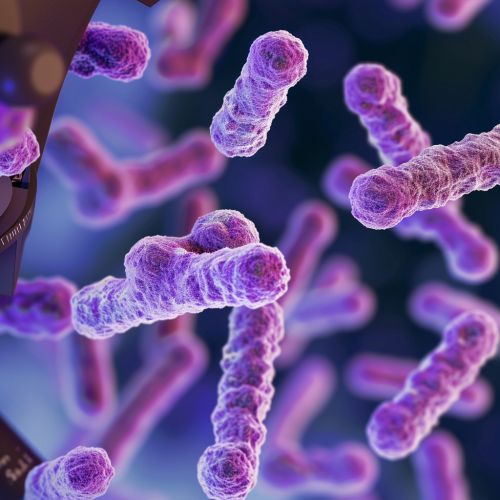Thiomicrospira
Overview
Thiomicrospira is a genus of bacteria that belongs to the family Piscirickettsiaceae. These bacteria are known for their unique ability to oxidize reduced sulfur compounds, such as sulfide and thiosulfate, to sulfate. As such, they play a crucial role in the sulfur cycle, one of the biogeochemical cycles that are essential for life on Earth.


Taxonomy
The genus Thiomicrospira was first described in 1974 by Jannasch and colleagues. It was initially classified within the family Thiotrichaceae, but was later reclassified to the family Piscirickettsiaceae based on phylogenetic analyses. The genus currently includes several species, such as T. crunogena, T. pelophila, T. xiamenensis, and T. halophila, among others. The taxonomy of Thiomicrospira is subject to ongoing research and revisions.
Morphology
Thiomicrospira bacteria are Gram-negative and rod-shaped. They are typically 0.5-1.0 µm in diameter and 1.5-4.0 µm in length. They possess a single polar flagellum, which allows them to be motile. The cell wall of Thiomicrospira is composed of peptidoglycan, a polymer that provides structural support to the bacterial cell.
Metabolism
Thiomicrospira bacteria are chemolithoautotrophs, meaning they derive energy from the oxidation of inorganic compounds and use carbon dioxide as their sole carbon source. Specifically, they are sulfur-oxidizing bacteria, as they oxidize reduced sulfur compounds to sulfate. This metabolic process is carried out in the presence of oxygen, making Thiomicrospira an obligate aerobe.
Ecology
Thiomicrospira bacteria are typically found in marine environments, particularly in areas where sulfur compounds are abundant. These include hydrothermal vents, cold seeps, and sulfur springs. They contribute to the sulfur cycle by converting reduced sulfur compounds to sulfate, which can then be utilized by other organisms. Thiomicrospira also plays a role in the carbon cycle, as it uses carbon dioxide for carbon fixation during chemosynthesis.
Genomics
The genomes of several Thiomicrospira species have been sequenced, providing insights into their metabolic capabilities and ecological roles. For instance, the genome of T. crunogena reveals the presence of genes involved in sulfur oxidation and carbon fixation, confirming its chemolithoautotrophic lifestyle. Genomic studies also shed light on the adaptive mechanisms of Thiomicrospira to its extreme environments, such as high pressure and low temperature.
Research and Applications
Thiomicrospira has been the subject of numerous research studies due to its unique metabolic capabilities and its role in biogeochemical cycles. Its ability to oxidize sulfur compounds has potential applications in bioremediation, particularly in the treatment of sulfur-rich industrial wastewaters. Moreover, the study of Thiomicrospira contributes to our understanding of life in extreme environments, which has implications for the search for life on other planets.
